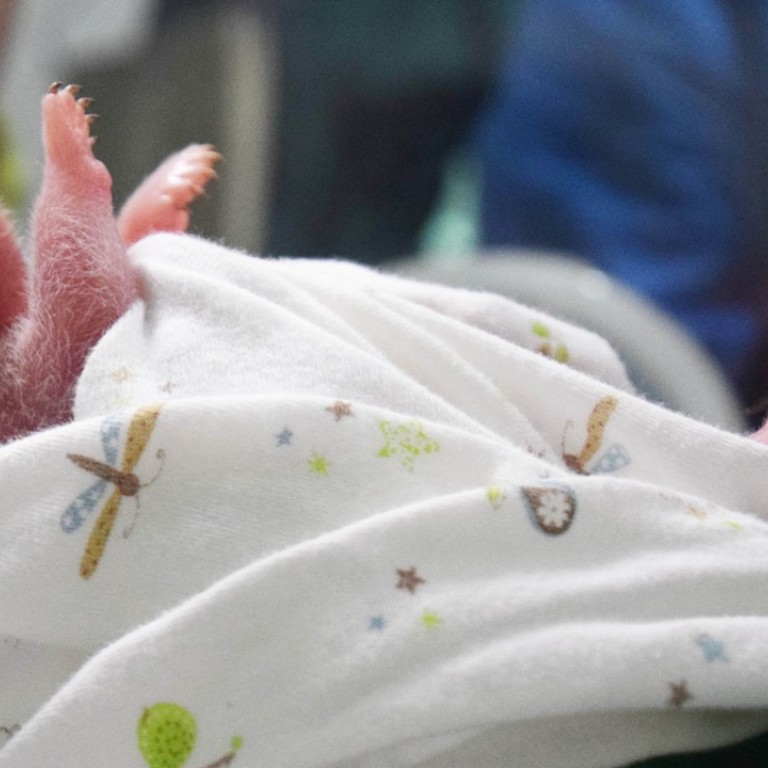
In world first, panda cub born in China after captive mother has a good time in the wild
The female cub marks success in an experiment to expand the captive stock’s gene pool by letting them mate in the wild, Chinese state media reports
The world’s first giant panda cub with both captive and wild parents has been born in southwestern China, Chinese state media reported on Tuesday.
The cub, born on Monday in Chengdu, Sichuan province, marked success in experiments to encourage captive pandas to mate with wild pandas to increase the captive stock’s genetic diversity, Xinhua news agency quoted Zhang Zhizhong, Communist Party chief of the China Conservation and Research Centre for the Giant Panda, as saying.
The 15-year-old female giant panda Cao Cao delivered the cub past 2am at the Hetaoping semi-wild training base. She started to show signs of pregnancy on July 1 and went into labour on July 30.

The female cub was a bit of a heavyweight at 216 grams, compared with the normal newborn weight of around 150 grams.
Wu Daifu with the training base attributed the cub’s unusually high weight to the mother’s good health and appetite during pregnancy.
Caocao was released into the wild on March 1. She was equipped with a positioning system and a recording device on her neck, and remained in the wild for nearly two months.
The recording device showed that Cao Cao went into heat on March 11 and mated with a wild male panda on March 23. The mating lasted for 1½ minutes.
Cao Cao, born in the wild, was rescued at the age of two by the research centre in 2003. She has delivered six cubs in captivity, including two pairs of twins.

For most of the last seven years, she has lived at the Hetaoping training centre, where she demonstrated strong adaptability to living in the wild.
The research centre launched an experiment late last year to bring in genes from the wild population to improve the health of captive pandas.
At the end of 2016, the worldwide captive giant panda population was 471, leading to growing concerns of inbreeding, Wu said.
The centre’s deputy head Zhang Hemin said babies from captive and wild parents would enrich the gene pool of the captive stock.

Huan Huan and her partner Yuan Zi were loaned to France from China in 2012 amid warming diplomatic ties between Paris and Beijing.
And in Hong Kong, 12-year-old giant panda Ying Ying recently showed signs of pregnancy after four rounds of artificial insemination and various efforts to conceive naturally, raising hopes of the city welcoming its first ever cub.

